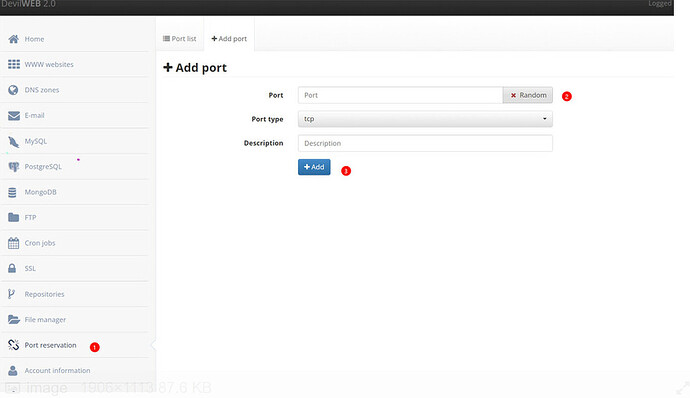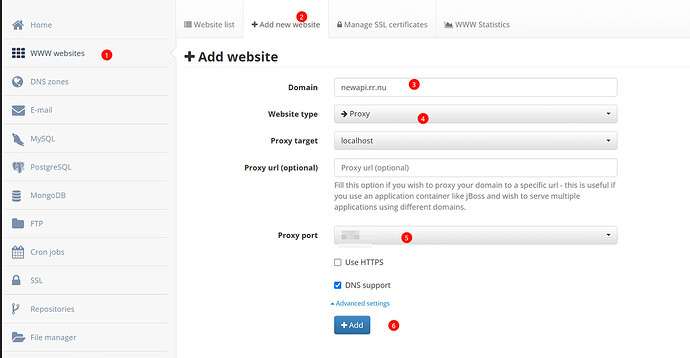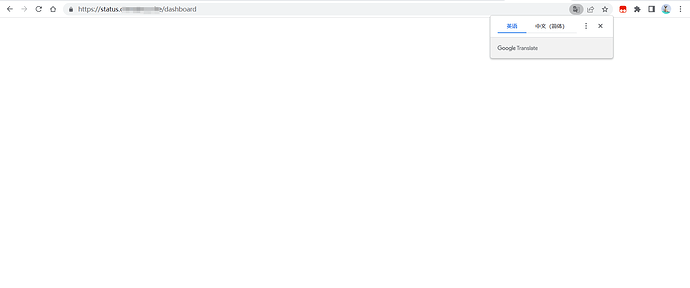1-4的步骤跟着博主走的
1.开放一个端口并开启应用权限
2.将域名托管到serv00并创建Website
域名托管不在这里叙述,可以看这部分,也可以使用CF进行托管
创建Website
3.安装Uptime-kuma
进入 public_html 文件下
cd /usr/home/你的serv名字/domains/域名/public_html
下载Uptime-kuma
git clone https://github.com/louislam/uptime-kuma.git
初始化程序
cd uptime-kuma
npm run setup
过程需要耐心等待
4.修改ecosystem.config.js文件
进入文件管理器后台,修改ecosystem.config.js文件
module.exports = {
apps: [{
name: "uptime-kuma",
script: "./server/server.js",
env: {
PORT: "port",
PLAYWRIGHT_BROWSERS_PATH: "/nonexistent"
}
}]
};
port改为你自己的
5.创建start.js文件
进入文件管理器后台,在ecosystem.config.js同级目录创建start.js文件
const { spawn } = require('child_process');
const path = require('path');
const config = require('./ecosystem.config.js');
const app = config.apps[0];
const env = { ...process.env, ...app.env };
const scriptPath = path.resolve(app.script);
const args = app.args ? app.args.split(' ') : [];
const child = spawn('node', [scriptPath, ...args], {
env,
stdio: 'inherit',
cwd: process.cwd()
});
child.on('close', (code) => {
console.log(`Child process exited with code ${code}`);
});
6.创建restart.sh文件
在ecosystem.config.js同级目录创建restart.sh文件
#!/bin/sh
# 设置路径
SCRIPT_PATH="/usr/home/Serv00账号名/domains/域名/public_html/uptime-kuma/start.js"
WORK_DIR="/usr/home/Serv00账号名/domains/域名/public_html/uptime-kuma"
LOG_FILE="$WORK_DIR/uptime-kuma.log"
RESTART_LOG="$WORK_DIR/restart_log.txt"
# 检查脚本是否在运行
if ! pgrep -f "node $SCRIPT_PATH" > /dev/null
then
# 如果脚本没有运行,则重新启动它
cd "$WORK_DIR"
nohup node "$SCRIPT_PATH" > "$LOG_FILE" 2>&1 &
echo "Restarted Uptime Kuma at $(date)" >> "$RESTART_LOG"
fi
更改Serv00账号名和域名为你自己的
7.赋权创建的文件
chmod +x start.js restart.sh
8.启动uptime-kuma
node start.js
启动后访问域名设置初始密码,因为启动退出SSH会马上停止,所需需要在huggingface中运行restart.sh
9.在CF上保活
9.使用huggingface进行保活(不稳定)
详细步骤:
最后的SCRIPT_PATH改为restart.sh 的绝对路径
/usr/home/serv00用户名/domains/域名/public_html/uptime-kuma/restart.sh
现在程序可以一直运行,不用担心后台进程被清理





